The BLM has asked me to say this: Please do not attempt to access the area without a valid permit. Due to the overwhelming popularity of the area, the permit system helps insure the protection of the unique geologic features for current and future recreational users.
 |
In order to access the Earthcache location, you will need to obtain a permit for the North Coyote Buttes area. There are two options to obtain a permit from the Bureau of Land Management, which manages the area. Please follow the Related Webpage link above, or follow the link below:
Coyote Buttes Permits
In addition to the Permit, whether by mail or one of the walk-in permits, you will also get some coaching on Leave No Trace Principles, to both enhance your visit and to protect the fragile formations in the area.
|

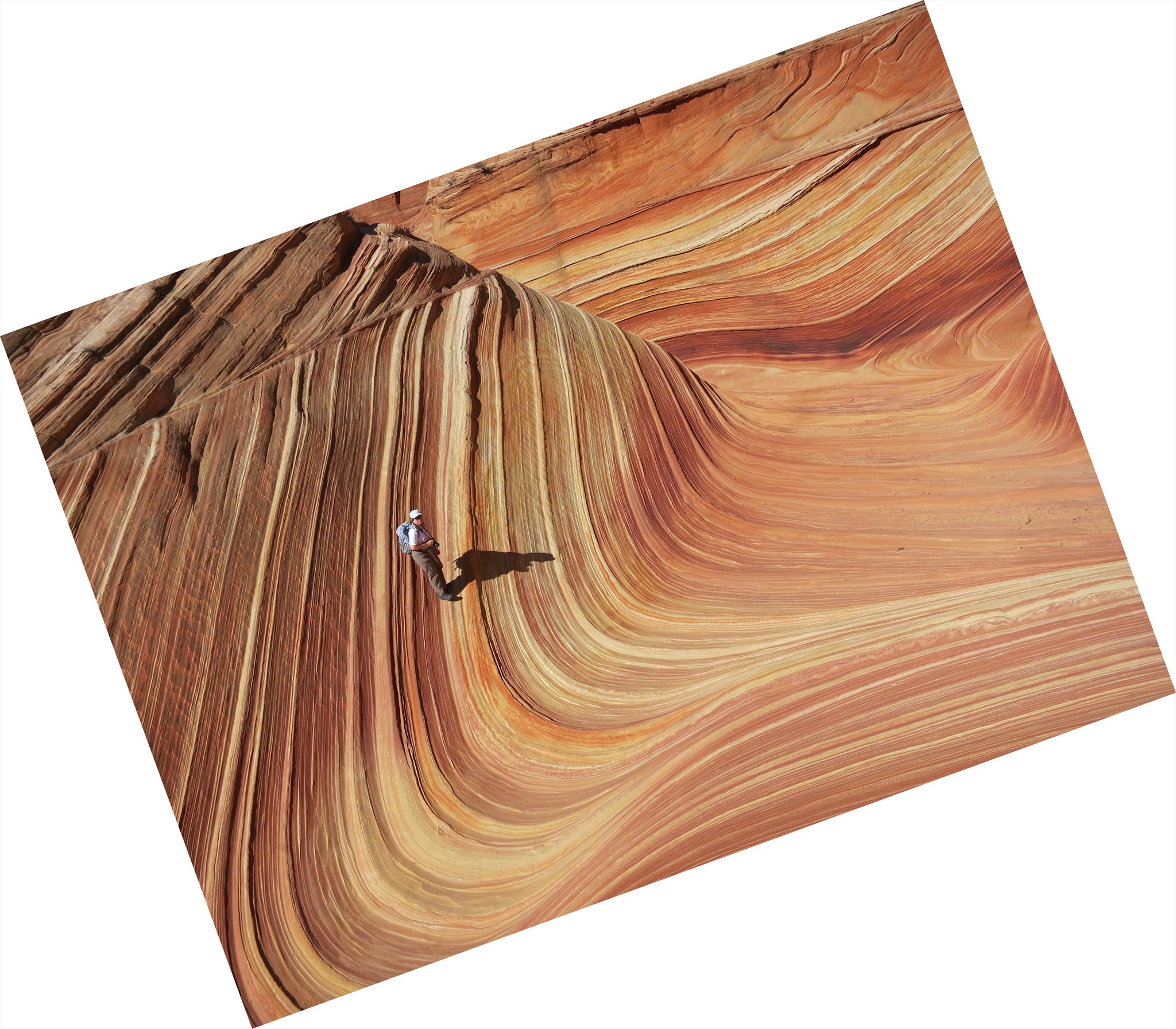
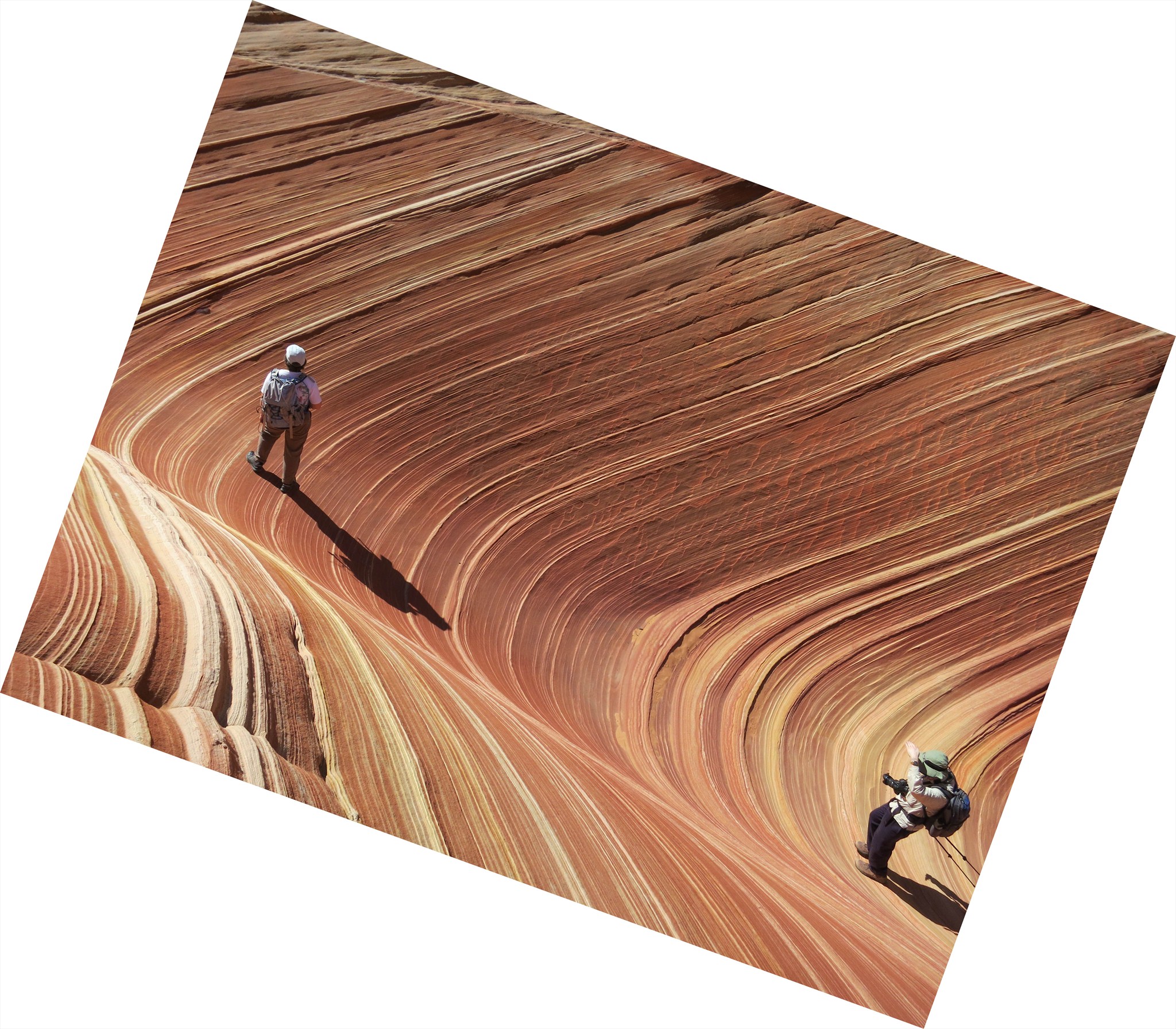
|
Logging Requirements
Email the following information/answers to me:
-
In the subject line, please include the following: "Blood of the Living Rocks GC3FA86".
-
The number of individuals in your group.
-
Your Permit Number issued by the BLM.
-
Describe the color of the harder ribs of sandstone that traverse the amphitheater.
-
Follow one of the ribs for some distance. Does it vary in width and color?
-
Compare the color and texture between the harder, broader ribs, to that of the thinner layers.
-
How do you think the comparative hardness of the sandstone layers contribute to the variation in colors?
|
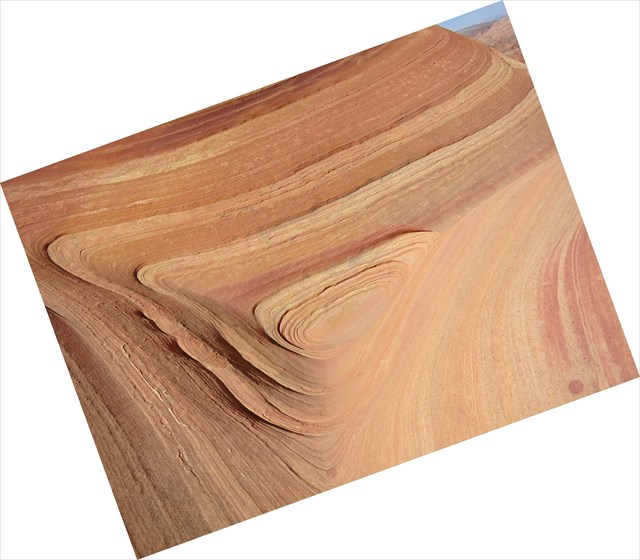
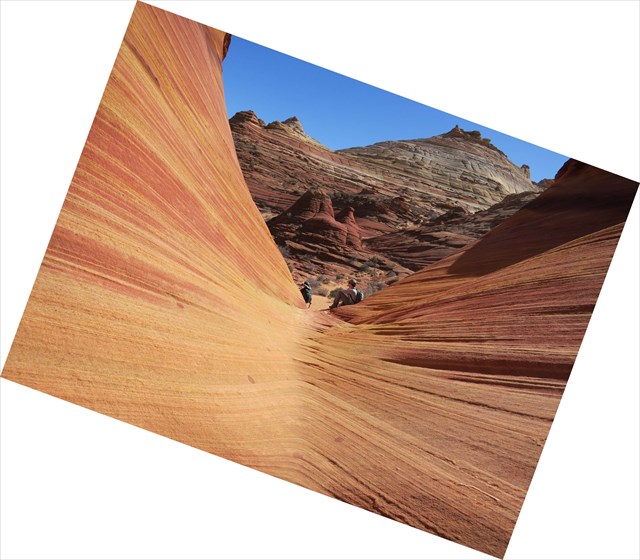

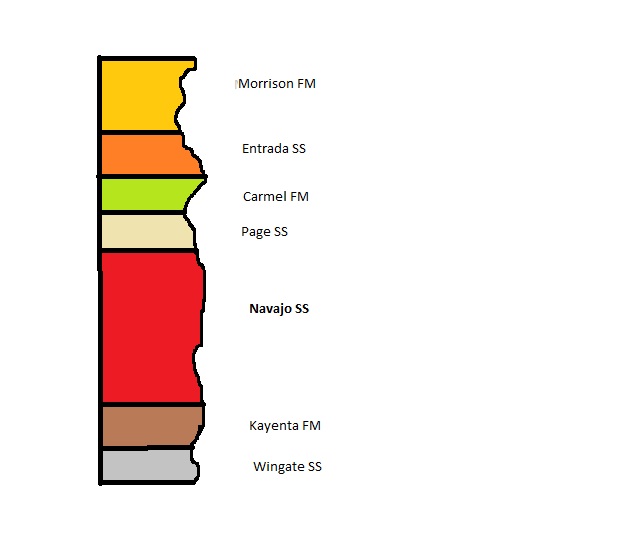
Once upon a time...
The story of North Coyote Buttes, and more specifically, The Wave, starts millions of years ago (180-190 million years ago), when North America was more equatorial than it is now, and the area that encompasses most of Utah, Colorado, Arizona and New Mexico was a vast desert sea, or erg. Like any science, Geologists love to put things in a taxonomy or "unit", and this vast sea desert on the Colorado Plateau, is preserved as the Navajo Sandstone Unit. Many other layers of sand and clay were deposited during this period, but the Navajo Unit was by far the largest, sometimes reaching a thickness of 2,500 feet.
The Navajo Sandstone Unit was deposited over a wide area of the Colorado Plateau and is exposed, not only in the area of Coyote Buttes, but also makes up many of the scenic wonders you'll see while passing through Zion, Capitol Reef, Arches, Canyonlands and the Grand Staircase Escalante.
The Navajo Unit , unlike the other Units of the area, displays some of the widest range of colors (from white to various shades of red), which will be our next topic.
Blood of the Living Rocks
The Title of this Listing is a shameless rip-off of a section heading from a small pamphlet I picked up in the Kanab Field Office while awaiting the Permit Lottery for The Wave, by Marjorie Chan and William Parry, called "Rainbow of Rocks" . Much of what I learned to put this Listing together was gleaned from that pamphlet, as well as the knowledgeable Staff at the Field Office, and great Geologic displays in the Office.

What gives sandstone it's red color?
Well, as you'll find out, red is not the only color that you'll see at The Wave, but they all have one thing in common: Iron. Besides all variations of red, you will also be able to observe, brown (limonite), yellow (goethite), metallic yellow (pyrite consisting of iron sulfide), and if you look hard enough, green (chlorite consisting of iron silicate), and black (magnetite). The process that gives is this extraordinary variations in color from a single element, is Oxidation. In the simplest terms: Rust.
What is the origin of this red pigment?
Similar to the way metal rusts, when the Iron (4th most abundant Element on Earth) in sand comes in contact with water and oxygen, two or three Iron electrons are lost to Oxygen (i.e. the Iron is Oxidized). The remaining electrons, together with the bound Oxygen, absorb all light except the red and brown portions of the spectrum (i.e. they reflect those wavelengths).
Why these variations in color?
As the iron bearing minerals weather and react with atmospheric oxygen and water, the iron released by this process forms thin coatings of hematite on the quartz sand grains. Over millions of years, these loose sand grains are compressed and cemented together in the rock we know as sandstone. Sandstone, however, is porous and permeable because of the space between the grains, which allows water to move relatively easily, like water through a sponge. As this water filters through the sandstone, some of the Iron pigment bound to the quartz sand crystals is dissolved, bleeding out some of the pigment on the surface of the rock, or carried away. In some instances, the variations in red and yellow patterns can be very striking, due to this "bleaching" process.
References and further reading:
"Rainbow of Rocks", by Marjorie A. Chan and William T. Parry; Department of Geology and Geophysics, 135 S. 1460 E. University of Utah, Salt Lake City, UT 84112-0111. Public Information Series 77; Utah Geologic Survey, a division of Department of Natural Resources
"Scenes of the Plateau Lands and How They Came to Be", William Lee Stokes; 1969, 20th printing. Starstone Publishing Company, 333 J Street, Salt Lake City, UT 84103.
Wikipedia, The Wave
Bureau of Land Managerment, North Coyote Buttes Permit Process.
Leave No Trace Principles.